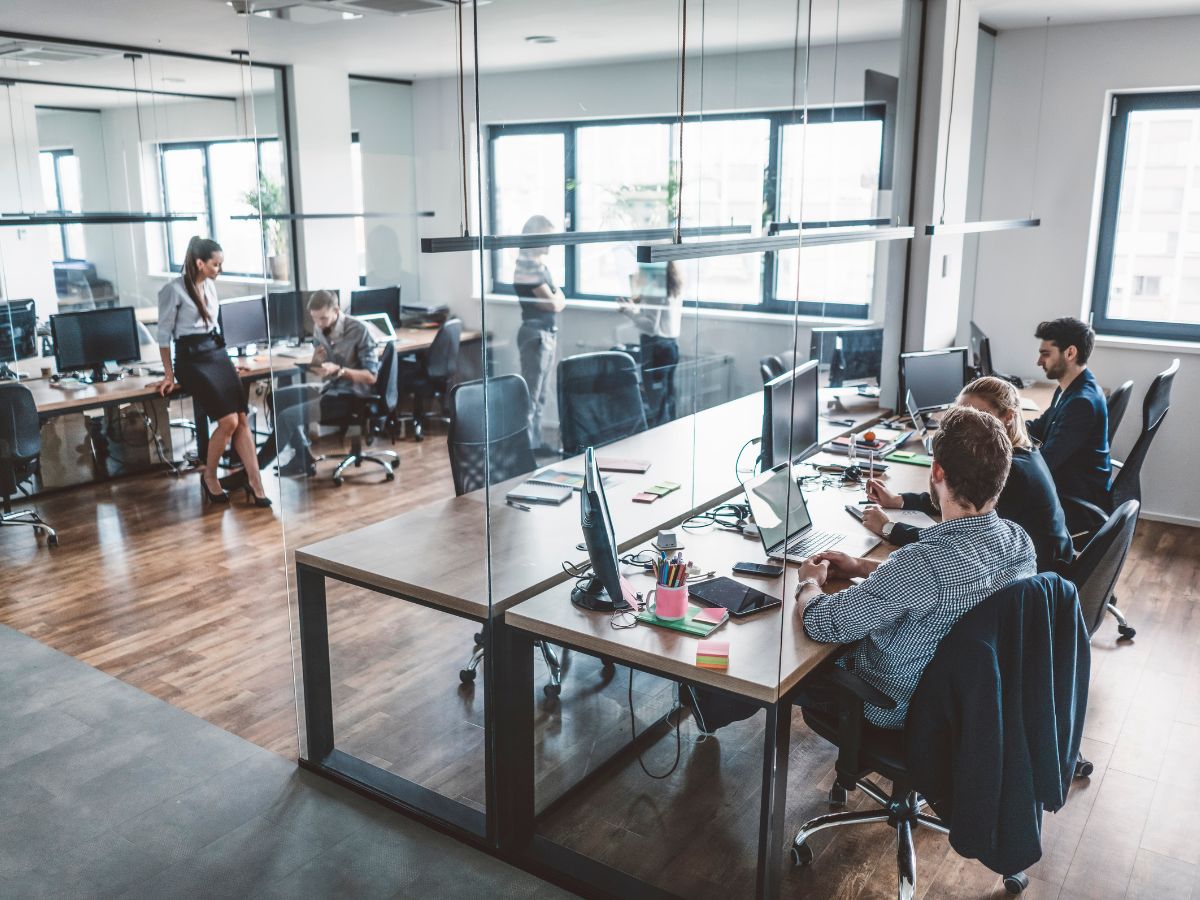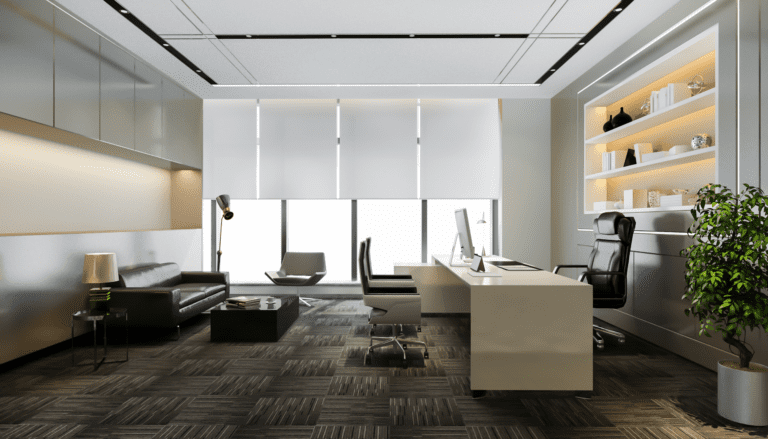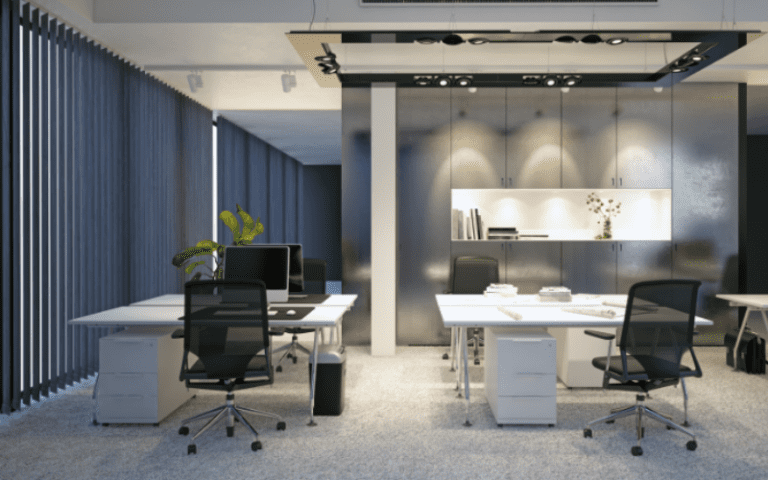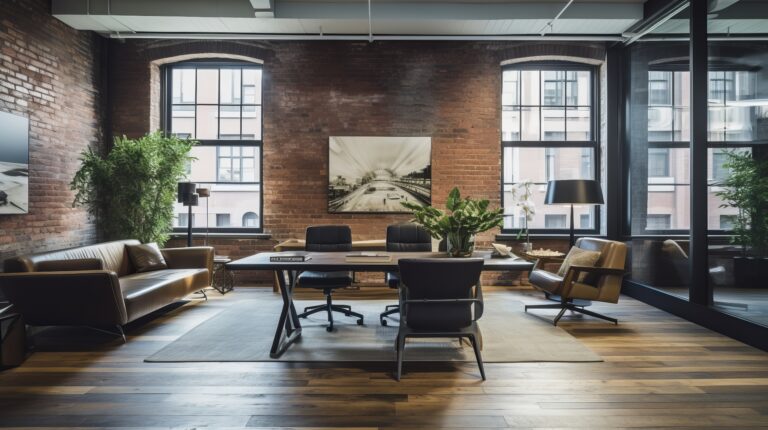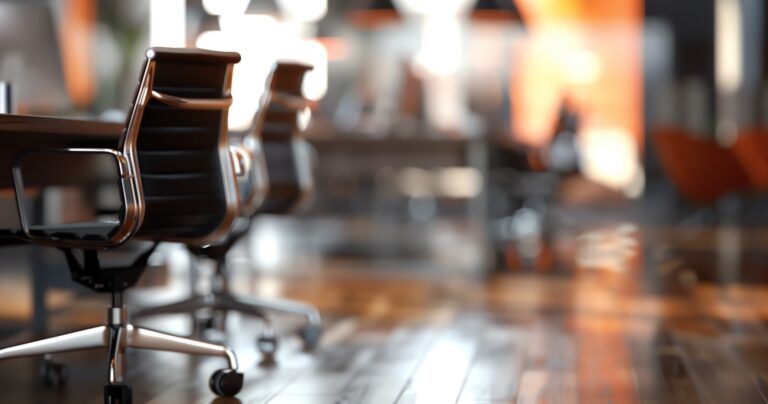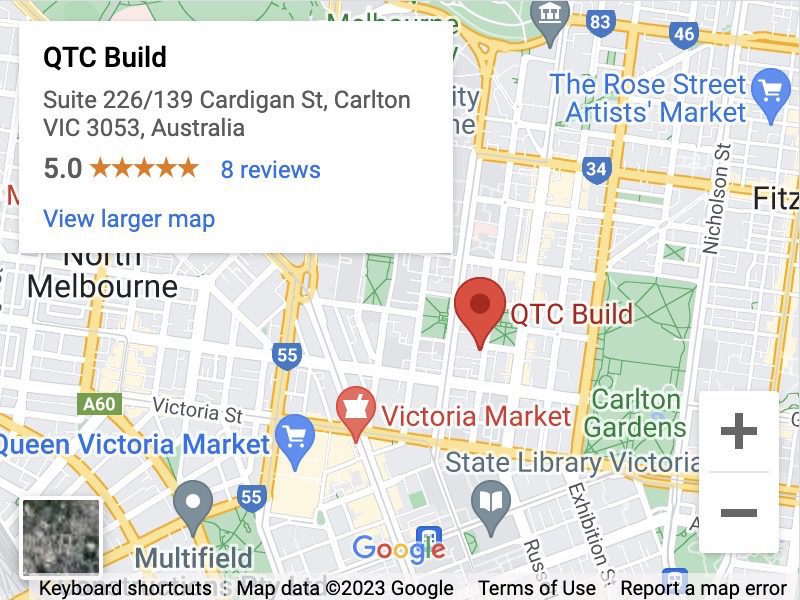Research has shown that between 43% and 53% of office workers feel uninspired and bored throughout the day. They may complain that the office environment contributes to the lack of motivation. After all, these workers are sitting and staring at a computer for much of the time.
So, how does the type of office furniture, the office lighting, and your office layout affect people’s productivity and the physical and mental wellbeing of your employees? In many ways, workplace design is key to keeping office employees engaged, productive, and happier.
Office Designs To Increase Productivity
Increase natural lighting and air circulation
Sometimes an office layout does not contribute to increasing natural lighting or air circulation. A well-designed office should replace small private offices with reduced height cubicles to increase air flow. If possible, avoid fluorescent lighting and replace window shades or curtains with solar film to allow sunshine to stream through different spaces and increase productivity levels.
For offices that simply don’t have enough windows to allow for more light, there are many ways to replicate the effect of the sun’s light. Use warm and light hues for office furnishing and neutral shades for walls and ceilings. Make sure all office windows are unobstructed and install recessed lighting to remove a harsh glare within the space.
According to the Harvard Business Review:
“Over a third of employees feel that they don’t get enough natural light in their workspace. 47% of employees admit they feel tired or very tired from the absence of natural light or a window in their office, and 43% report feeling gloomy because of the lack of light.”
An office space designed to reduce stress levels
Well-designed office spaces are an important factor to reduce stress levels, which can improve employee productivity. A healthy work environment will use ergonomic seating and desks that support posture and improve comfort. Also, add furniture with more storage, which allows employees to be more organized and remove distracting clutter from desktops.
Employee satisfaction is increased when they have room to move around, as opposed to a cramped and crowded space. An office space designed for movement will feature a variety of workspaces. Consider standing desks, alternate work areas near windows, and breakout rooms, which are quiet spaces that can contribute to a healthy working environment.
“Four in 10 (office workers) say their desk influences their productivity, and more than a third say their chair affects their stress level every day. Nearly 70 percent have received a new office chair in the past five years.”
Maximize productivity with your office layout
A healthier workspace is one that has an office layout designed for collaboration and good traffic flow. Also, consider those employees that have the option to work from home. Accommodate these employees with separate office space for office technology, like videoconferencing. Just make sure your office tech is also stress-free and easy to use.
Create a flexible office layout that is both adaptable and agile. This means incorporating modular office furnishings that are lightweight and can be changed to accommodate various workspace needs. Modular office units also allow people to customize their individual space to better suit their job functions.
One research study asked 3,608 full-time office workers across the U.S. what they “need, want, and expect from their work environment”. The most striking response: 90 percent of people surveyed reported performing better in well-designed workplaces.
A change to the office design can boost creativity and productivity. Consider inspiring your employees to be more innovative by providing plenty of air circulation and natural lighting, along with an office layout that enhances collaboration and promotes well-being.
At QTC Build we start with a workplace strategy to make sure we understand the needs of your workplace and the people within it. Contact us to discuss how we can help you improve your productivity.

